The dawn of the new tax year UK brings with it a suite of changes that UK businesses must navigate to maximise their tax efficiency and ensure compliance. From revised corporation tax rates to adjustments in VAT and capital gains tax, understanding these updates is crucial for effective financial planning. This guide will delve into the significant tax regulations set to affect businesses in 2024, providing a comprehensive overview of each change, its implications, and strategic approaches to handle them.
Overview of Key Tax Changes in the New Tax Year UK
Corporation Tax Rates
Starting April 2024, the Corporation Tax rate has seen an adjustment. Businesses now face a rate of 25% on profits over £250,000. However, companies with profits under £50,000 will continue to be taxed at the current rate of 19%, preserving relief for smaller businesses. This tiered system introduces a marginal relief provision for profits between £50,000 and £250,000, effectively creating a gradual increase in effective tax rates for growing businesses.
Implications:
- Larger corporations will need to strategise more diligently to mitigate the higher tax burden.
- Smaller businesses must plan growth carefully, considering the tax implications of crossing the £50,000 profit threshold.
Capital Gains Tax Adjustments
The capital gains tax (CGT) exemption threshold remains frozen at £12,300 until 2026, compelling investors and businesses to plan their asset disposals carefully. Simultaneously, the rates of CGT have not been increased, providing some stability in investment planning.
Implications:
- With the threshold frozen, more disposals will likely result in taxable gains.
- Businesses need to time their asset disposals to optimise tax efficiency strategically.
VAT Adjustments
The VAT registration threshold is maintained at £90,000, the same as in previous years, which continues to exempt smaller businesses from the need to register for VAT. However, changes to VAT rates and schemes, particularly in sectors such as hospitality, need to be closely monitored. The standard VAT rate remains at 20%, but specific schemes and products can have different rates which are critical to track.
Implications:
- Businesses close to the VAT threshold should monitor their turnover carefully to manage registration requirements.
- Different VAT schemes may offer advantages depending on business activities and sectors.
Income Tax Bands and Allowances
For individual taxpayers, the Personal Allowance remains at £12,570 for the 2024/25 tax year, and the higher rate threshold also stays at £50,270, pending any future updates. These thresholds affect business directors and sole proprietors, influencing their personal tax planning and salary dividends strategy.
Implications:
- Stagnant thresholds mean more income will be taxed at higher rates due to inflation and wage increases.
- Effective salary and dividend strategies are essential to optimise personal tax positions.
Compliance Requirements and Deadlines
Reporting Requirements
The HMRC continues to phase in its Making Tax Digital (MTD) initiative, which now includes Making Tax Digital for VAT, applicable to all VAT-registered businesses. This digital reporting requirement necessitates compatible software for record-keeping and filing, which all applicable entities must now have in place.
Key Deadlines:
| Compliance Area | Requirement | Deadline | Details |
|---|---|---|---|
| VAT Returns | Quarterly or Annual Filing | Variable; based on VAT stagger group | Businesses must submit VAT returns and any payment due usually one month and seven days after the end of their VAT period. |
| Corporation Tax | Filing of CT600 (Company Tax Return) | 12 months after the end of the accounting period for filing, 9 months and one day after the end of the accounting period for payment | Companies must pay their Corporation Tax or inform HMRC that there is none to pay by the deadline. |
| Self-Assessment | Submission of Self-Assessment Tax Return (SA100) | 31 January following the end of the tax year (paper deadline 31 October) | Individuals, including sole traders and partners, must file returns and pay any tax due. |
| Making Tax Digital (MTD) for VAT | Digital record keeping and filing using MTD-compatible software | From the start of any VAT period that begins on or after 1 April 2022 for businesses over the VAT threshold (currently £85,000) | All VAT-registered businesses must follow MTD rules for their VAT records, returns, and payments. |
| Pay As You Earn (PAYE) | Monthly or quarterly payments | 19th of the month (or 22nd if paid electronically) following the tax month end | Employers must submit PAYE payments for income tax and National Insurance contributions. |
| Construction Industry Scheme (CIS) | Monthly return to HMRC | 19th of each month (or 22nd if paid electronically) following the tax month end | Contractors must submit CIS returns and make any necessary payments to HMRC, detailing payments to subcontractors. |
| Business Rates | Payment of business rates | Varies by local council | Businesses operating from commercial premises need to pay business rates, usually payable in monthly instalments. |
| Annual Accounts and Reports | Filing with Companies House | 9 months after the company’s financial year ends | Limited companies must file their statutory accounts and reports annually. |
Notes on Compliance and Planning:
- VAT Stagger Groups: Businesses can determine their specific stagger group from their VAT registration details, affecting the exact monthly deadline for their VAT return submission.
- Corporation Tax Planning: It’s advisable for businesses to calculate their estimated tax liability well before the deadline to ensure adequate financial planning and avoid interest on late payments.
- Self-Assessment Tips: Utilising software that complies with HMRC’s requirements can streamline the process, especially if adjusted for real-time tax code changes and other updates.
- MTD Compliance: Ensuring compatibility with HMRC’s Making Tax Digital framework is crucial. All records and returns must now be maintained and submitted digitally via MTD-compatible software.
This table should serve as a straightforward guide to help businesses keep on top of their UK tax obligations, avoiding penalties and ensuring timely compliance with all HMRC requirements. If you require further details or need specific advice, consulting with a tax professional like those at LT Accounting would be beneficial. They can provide tailored guidance suited to your business needs.
Strategies for Maximising Tax Efficiency in the New Tax Year UK
Navigating the tax landscape this new tax year UK effectively requires more than just compliance; it involves strategic planning to maximise tax efficiency. This section outlines practical strategies that UK businesses can implement to optimise their tax positions in light of the recent changes.
Utilising Tax Reliefs and Credits
Research and Development (R&D) Tax Credits: R&D tax credits continue to be a significant opportunity for businesses investing in innovation. Companies can claim up to 33% of their R&D expenditure as a tax credit, which can significantly reduce their tax bill or result in a payable credit from HMRC.
- Strategies:
- Ensure all potential R&D activities are properly documented and included in the tax credit claim.
- Consider consulting with specialists to maximise the claimable amount.
Creative Industries Tax Reliefs (CITR): These are a group of eight reliefs that allow qualifying companies to claim a larger deduction, or in some cases a payable tax credit when calculating their taxable profits. These cover films, animation, high-end television, video games, children’s television, theatre, orchestra, and museums and galleries exhibitions.
- Strategies:
- Identify activities within the business that qualify for CITR and make timely claims.
- Use expert advice to navigate new tax year uk and the complexities of these reliefs.
Capital Allowances: Capital allowances enable businesses to write off the cost of capital assets against taxable income. They include the Annual Investment Allowance (AIA), which in 2024 allows for up to £1 million in expenditure to be fully deducted from profits.
- Strategies:
- Plan capital expenditures to take full advantage of the AIA limits.
- Consider the timing of purchases to optimise tax relief, especially towards the end of the fiscal year.
Effective Use of Losses
Businesses that incur losses have several options to relieve these against past or future profits, significantly affecting their tax liability.
- Carry Backward: Losses can typically be carried back one year against total profits, providing an immediate refund of tax previously paid.
- Carry Forward: Losses can be carried forward indefinitely and offset against future profits, reducing future tax liabilities.
- Strategies:
- Assess the most beneficial use of losses, whether carry backward for quicker tax refunds or carry forward to reduce future tax payments.
- Maintain detailed records to substantiate the loss claim and decide the optimal time to utilise them.
Pension Contributions
Pension contributions remain one of the most tax-efficient ways to extract profits from a company. Contributions made by the company to a registered pension scheme can be deducted from business profits before tax.
- Strategies:
- Maximize employer contributions to pension schemes, which are deductible for the business and not taxable for the employee up to the annual allowance.
- Consider the timing of contributions to coincide with the company’s financial year-end to reduce the taxable profit for that year.
Sector-Specific Considerations
Different sectors can have varied implications under the new tax changes, particularly concerning VAT and the Construction Industry Scheme (CIS).
Retail Sector
The retail sector faces specific challenges with VAT, especially those dealing with different types of goods, some of which may qualify for reduced or zero rates.
- Strategies:
- Review product ranges to identify if any items qualify for reduced VAT rates under new guidelines.
- Implement robust systems to handle the VAT calculations correctly, especially if offering a mix of different VAT-rated products.
Construction Sector
Businesses in the construction sector need to be particularly aware of the CIS changes, which affect how payments between contractors and subcontractors are handled for tax purposes.
- Strategies:
- Verify subcontractor status with HMRC to ensure the correct CIS deductions are being made.
- Keep detailed records of all CIS material and labour costs to substantiate any deductions or rebates claimed.
Freelancers and Small Businesses
IR35 continues to be a significant concern for freelancers and contractors. The rules determine if a worker should be classified as employed or self-employed for tax purposes.
- Strategies:
- Regularly review contracts and working practices to ensure compliance with IR35.
- Consider seeking professional advice to structure contracts and work arrangements that clearly define the independent status, if applicable.
Planning for the Future
With tax regulations continually evolving, forward planning becomes indispensable. Forecasting future changes can help businesses prepare financially and strategically.
- Future Proofing:
- Stay informed about potential tax changes and developments that could impact the business.
- Engage in scenario planning to anticipate the financial impacts of future tax rate changes or new legislation.
- Advisory Services:
- Utilise accounting services, such as those provided by LT Accounting, to get tailored advice that considers not only current tax rules but also planned changes and strategies.
Utilising these strategies effectively requires a blend of proactive planning, understanding of the latest tax rules, and occasionally, expert advice. For businesses looking to not only comply but thrive under the new tax year UK regime, aligning with knowledgeable partners like LT Accounting can make all the difference.
Conclusion: Navigating the New Tax Year UK with Strategic Insight
As we’ve explored throughout this guide, the new tax year UK brings a myriad of changes and opportunities for UK businesses to enhance their tax efficiency and compliance. Adapting to these changes requires a well-rounded approach, encompassing understanding new regulations, utilising available tax reliefs, and planning for future tax obligations strategically. Here, we’ll recap the key strategies covered and outline the proactive steps businesses should consider.
Recap of Key Tax Changes and Strategies
- Corporation Tax: Companies need to be aware of the new rates—19% remains for profits under £50,000, but increases to 25% for profits over £250,000. Utilising marginal relief for intermediate profits can help mitigate the tax burden.
- Capital Gains Tax: With the freezing of the CGT exemption threshold at £12,300 until 2026, planning capital asset disposals wisely becomes crucial to minimise potential tax impacts.
- VAT Adjustments: Staying vigilant on the registration threshold and applying suitable VAT schemes according to business operations are essential to manage VAT liabilities effectively.
- Income Tax Bands and Allowances: Individual taxpayers, particularly business directors and sole proprietors, must optimise their salary and dividend strategies to benefit from stagnant thresholds amid inflationary pressures.
Strategic Approaches to Maximise Efficiency
- Leveraging Tax Reliefs: Actively seek out and claim reliefs such as R&D tax credits, CITR, and capital allowances to significantly reduce tax liabilities.
- Managing Losses: Decide strategically whether to carry losses back for immediate relief or forward to offset future profits, based on the company’s financial health and tax planning goals.
- Pension Contributions: Enhance tax efficiency through maximised, timely pension contributions, which reduce taxable profits and extend benefits to employees.
Proactive Steps for Businesses
- Regular Review and Planning:
- Conduct regular tax reviews to stay ahead of changes and ensure all compliance requirements are met efficiently.
- Engage in continuous financial planning, especially around tax deadlines, to smooth out cash flows and reduce last-minute scrambles.
- Utilisation of Professional Advisory:
- Collaborate with tax professionals like LT Accounting to navigate new tax year UK complex tax issues, from compliance to strategic tax planning.
- Seek advisory services for bespoke strategies that align with specific business needs and sectoral considerations, ensuring all potential tax advantages are explored.
- Embrace Technological Solutions:
- Implement robust accounting and tax software solutions to manage reporting under HMRC’s Making Tax Digital requirements efficiently.
- Use technology to forecast tax obligations, simulate future scenarios, and make informed financial decisions.
- Stay Informed:
- Keep abreast of the latest tax changes and potential upcoming legislation that could impact the business.
- Participate in tax planning seminars, workshops, and other educational opportunities offered by financial experts.
Final Thoughts
The landscape of UK business taxation is continually evolving, presenting both challenges and opportunities. By understanding these changes, implementing strategic tax planning, and utilising professional advisory services, businesses can not only comply with the new regulations but also gain a competitive advantage through enhanced financial efficiency.
For tailored advice and comprehensive support with tax planning and compliance, consider partnering with LT Accounting. Their expertise in accountancy, bookkeeping, and tax services will provide you with the insights and strategies needed to navigate the new tax year UK confidently and successfully.
As the tax year progresses, remember that the key to managing business taxes effectively lies in proactive planning, ongoing education, and strategic collaboration. With the right approach and resources, you can optimise your business’s financial practices for better outcomes in the 2024 tax year and beyond.
Let’s tackle the new tax year UK with knowledge, strategy, and confidence, ensuring compliance and maximising efficiency at every turn.





